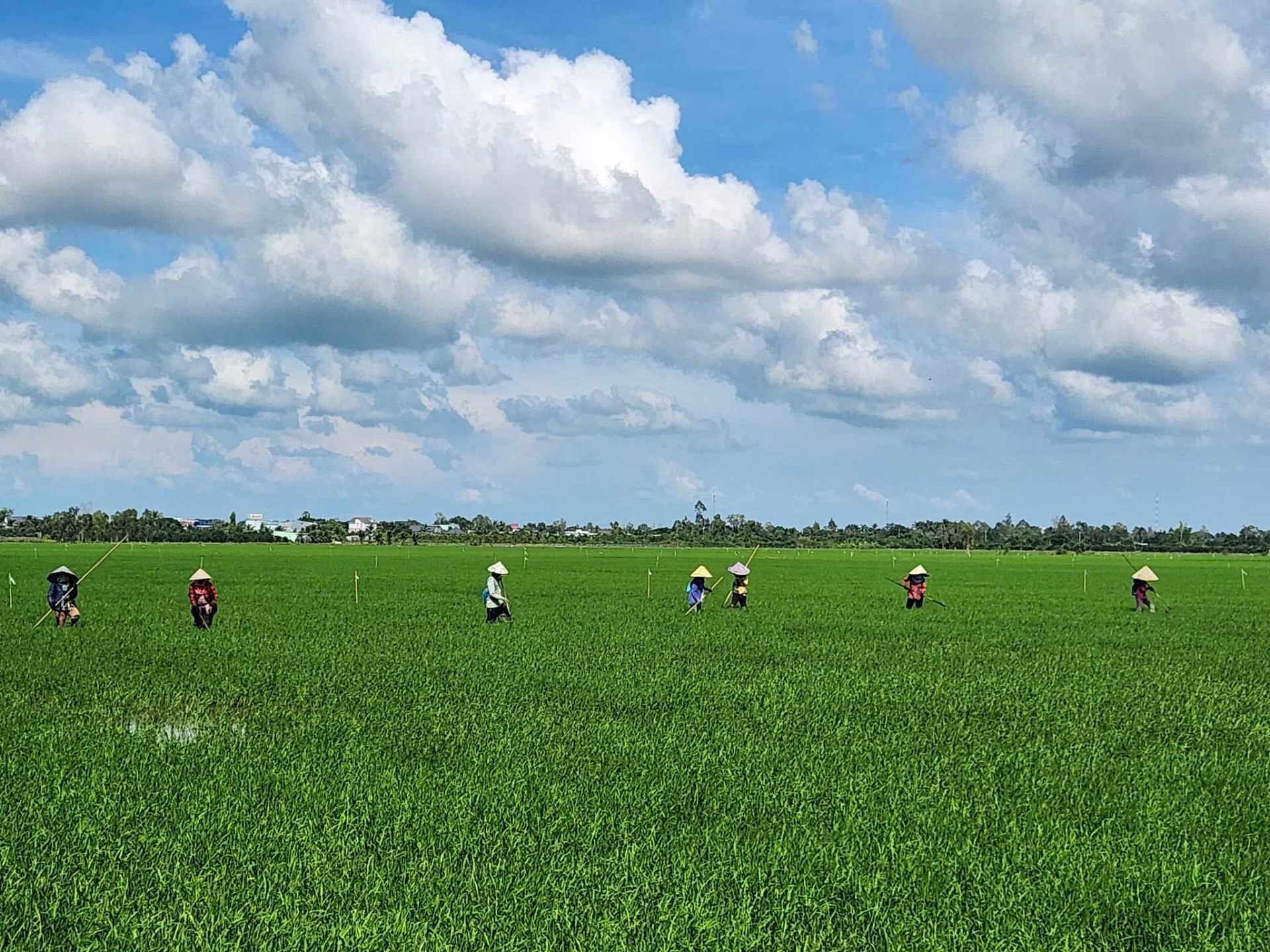
At a conference on a preferential credit program to implement the ‘1 million hectares of high-quality low-emission rice cultivation’ in the Mekong Delta, held November 7 in Dong Thap, Deputy Minister of Agriculture and Rural Development Tran Thanh Nam said this is the first project in the world with a large scale of 1 million hectares directed by a government. The project has drawn special attention from international organizations and embassies.
“Once the state makes commitments, it will release policies and mechanisms on sustainable low-emission production and cultivation process. We are cooperating with international organizations to figure out a standard cultivation process,” Nam said.
According to Nam, international organizations recommended that the production scale of 1,000-2,000 hectares is ideal to help reduce emission collect costs. During production, farmers and cooperative can create high-quality and low-emission rice grains, thus reducing costs and increasing yield.
Regarding the granting of certificates on emission reduction, MARD has applied this on a trial basis in Soc Trang, Bac Lieu, Kien Giang, Dong Thap and Can Tho. The initial achievements of the 1 million hectare of low-emission cultivation program are very encouraging with the production cost reducing by 20-30 percent, the yield increasing by 10-15 percent, and the average emission reduction factor of 5-6 tons CO2 per hectare.
“When the model was launched, it did not attract farmers. But later, more and more farming households want to join the program,” Nam said.
Some foreign companies and organizations have come to Vietnam seeking domestic partners to deploy low-emission cultivation projects. However, Nam warned localities to be cautious about the plans, because ‘the carbon credit market is extremely complicated’.
Meanwhile, Vietnam will only begin granting carbon credits on 20,000 hectares of rice by the end of 2025.
“Foreign businesses and institutions are flocking to Vietnam to buy credits because European countries say that they have credits from next year,” he explained.
In order to produce high-quality and low-emission rice, farmers have to follow many principles and change their traditional cultivation method. In irrigation, for example, rice producers have to strictly adhere to the time of draining water from rice fields.
Farmers also have to change their habit of burning straw and pushing it into mud. This will create greenhouse gas, harmful to the environment. Some enterprises now want to buy straw and agricultural by-products in large quantities, while others want to recycle husk to create a friction substance for car tires.
If farmers can satisfy requirements during the production process, they will receive carbon credits, which will be a kind of merchandise to be traded in the market.
The major principle of the 1 million hectare of high-quality low-emission rice cultivation program is uniting farmers, cooperatives and enterprises in a link chain. However, they need to be united in production as well, not just in sales.
No limits on loans
State Bank of Vietnam Deputy Governor Dao Minh Tu, who attended the conference, said that SBV and commercial banks committed to provide enough loans to run the program.
“We need to reorganize our structure, and if we want to go far, we need to seek support from each other. Involved parties need to be united and faithful. If we only look for personal interests, the program will fail,” Tu said.
The farmers who join the program can access bank loans and obtain credit limits suitable to their production scale and circle. The businesses that make medium-term investment can access long-term loans. If enterprises want to borrow VND1 trillion worth of medium- and long-term loans, they can seek syndicated loans from many banks.
Commercial banks have committed to provide preferential loans with interest rates at least one percent lower than commercial loans, with no collateral required. Agribank will be the major bank that disburses money for the program with no credit limits. The only thing clients have to do is open accounts at the bank, so that the bank can control cash flow.
Tu stressed that under the program, farmers can access unsecured bank loans (they don’t have to have assets) because banks can control the cash flow. This is a very important condition for banks to join the program.
Repeatedly affirming that there won’t be any limit on loans to be provided, Tu said if commercial banks cannot arrange capital, the central bank will make an intervention through refinancing commercial banks.
Tuan Nguyen